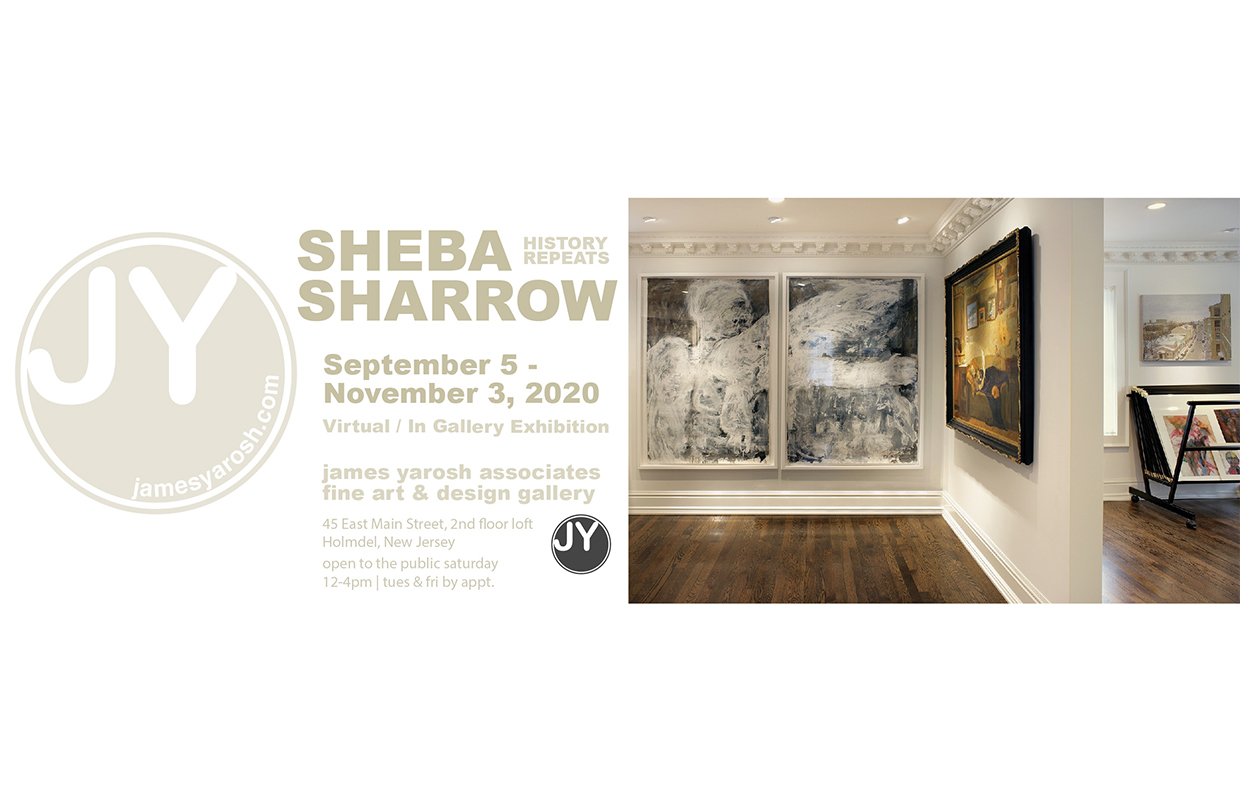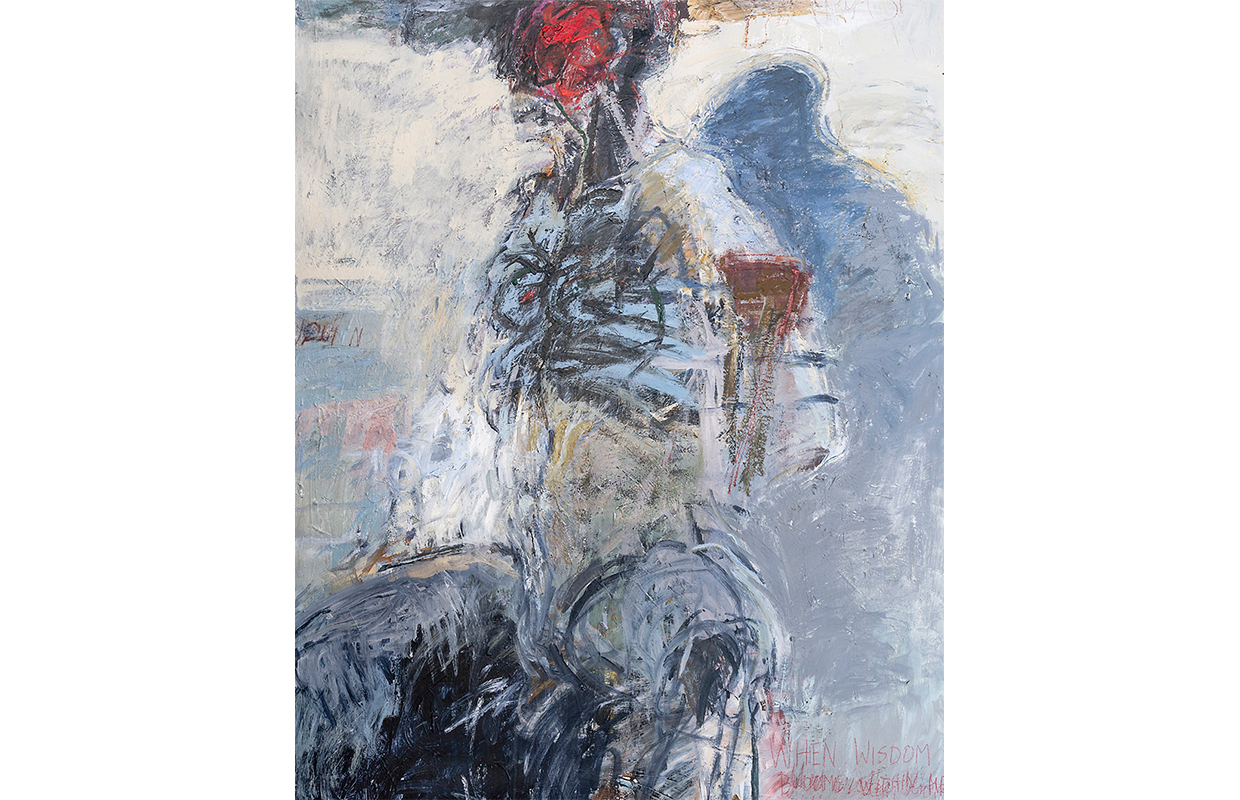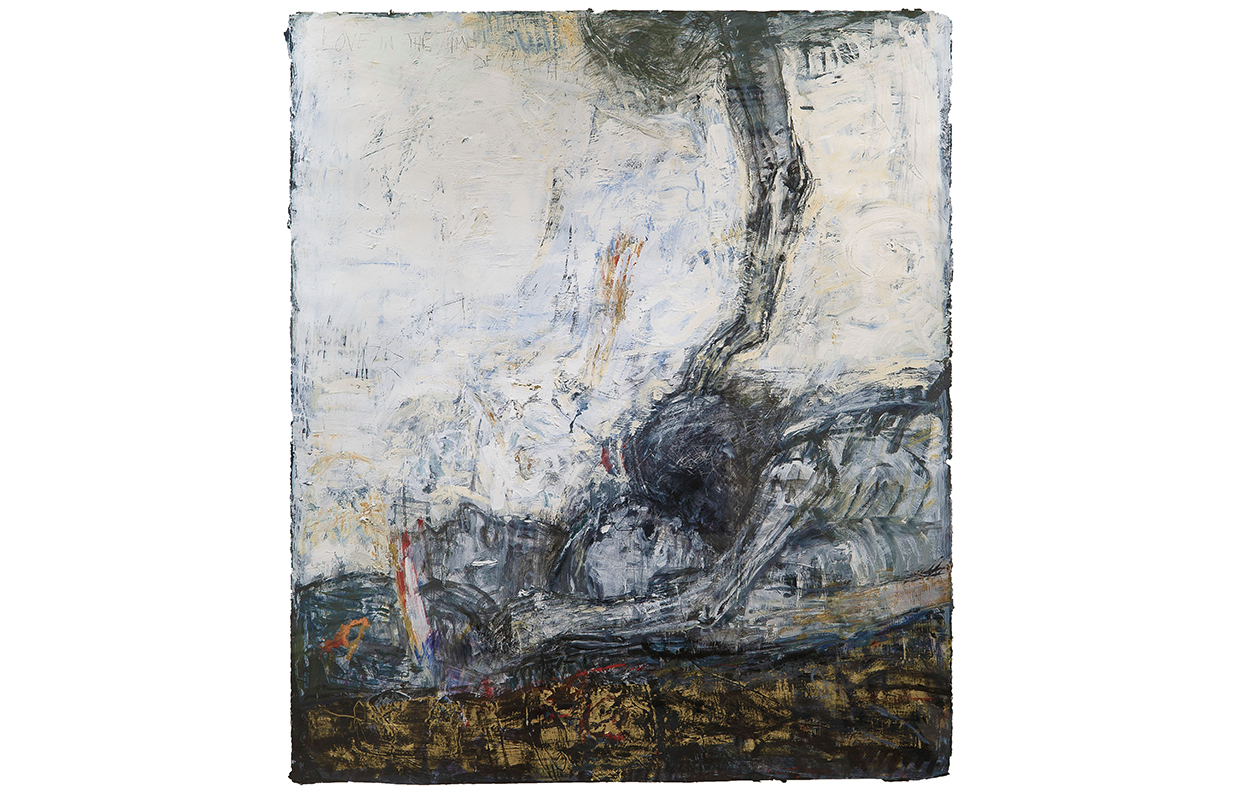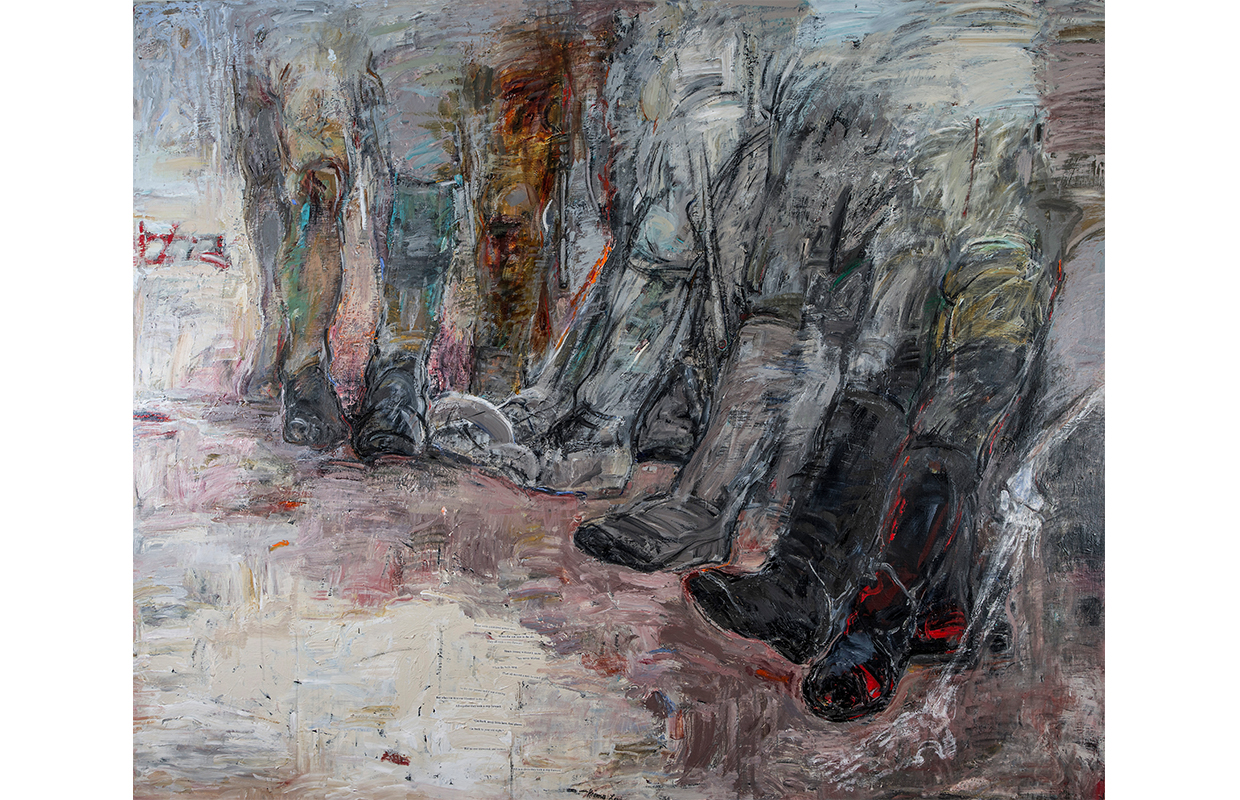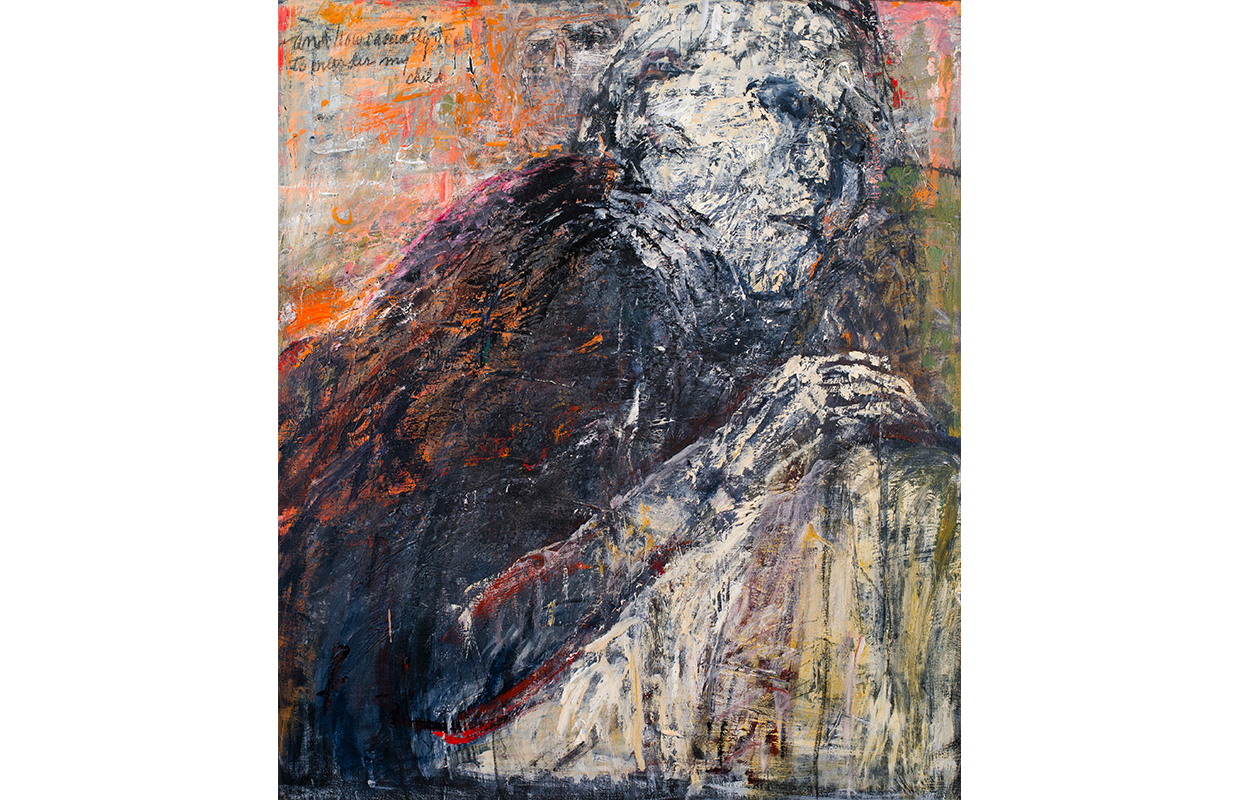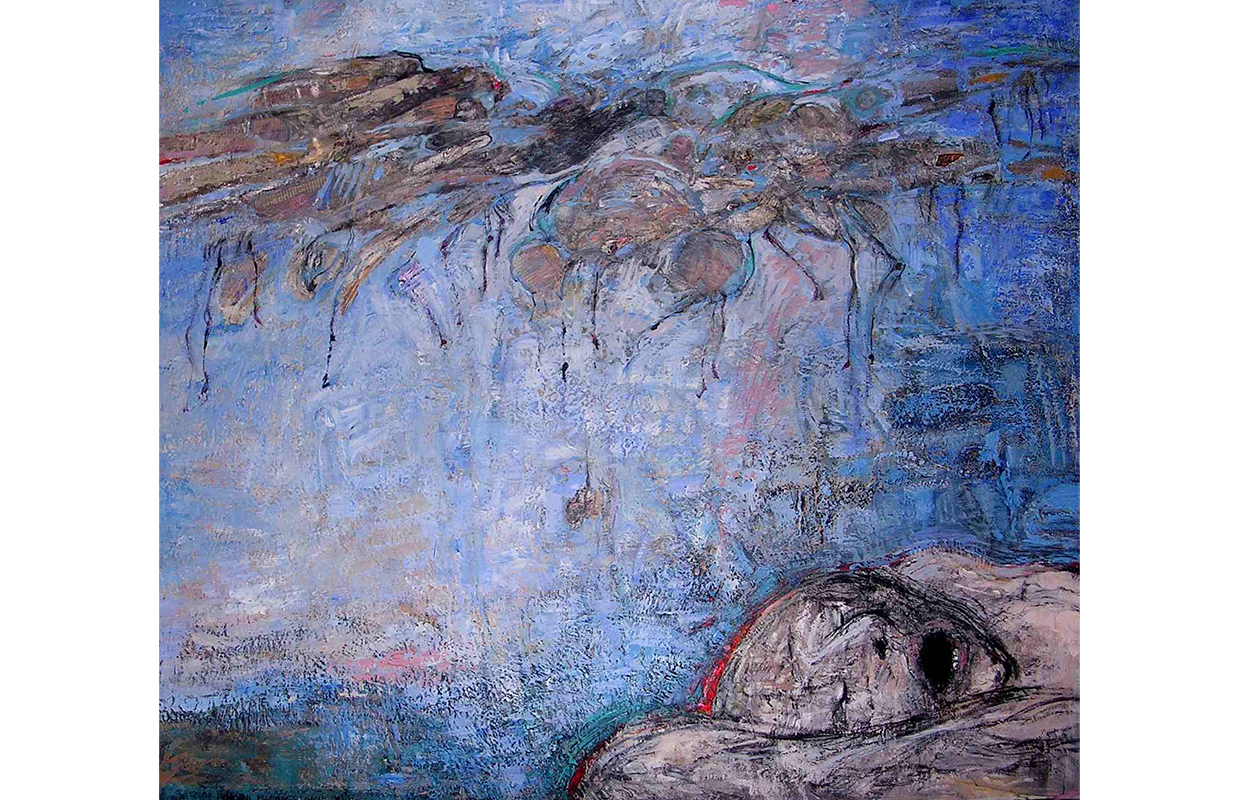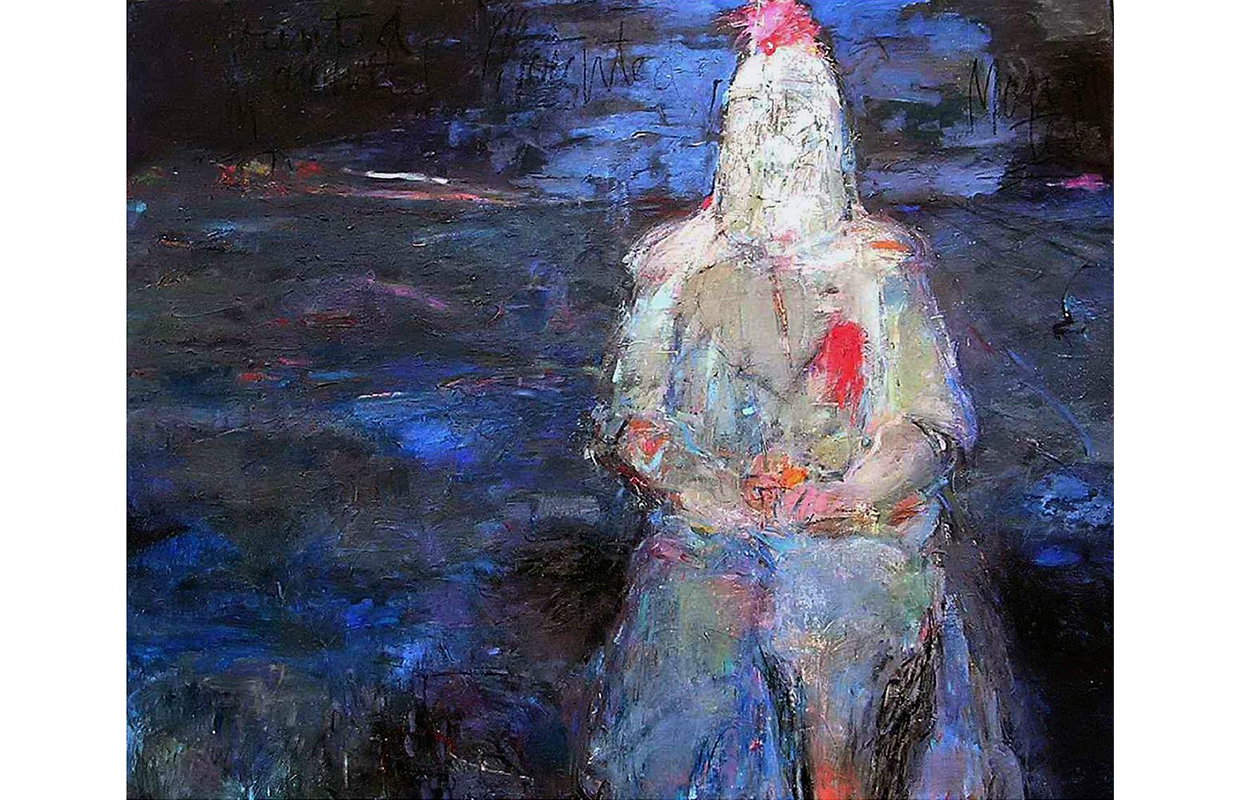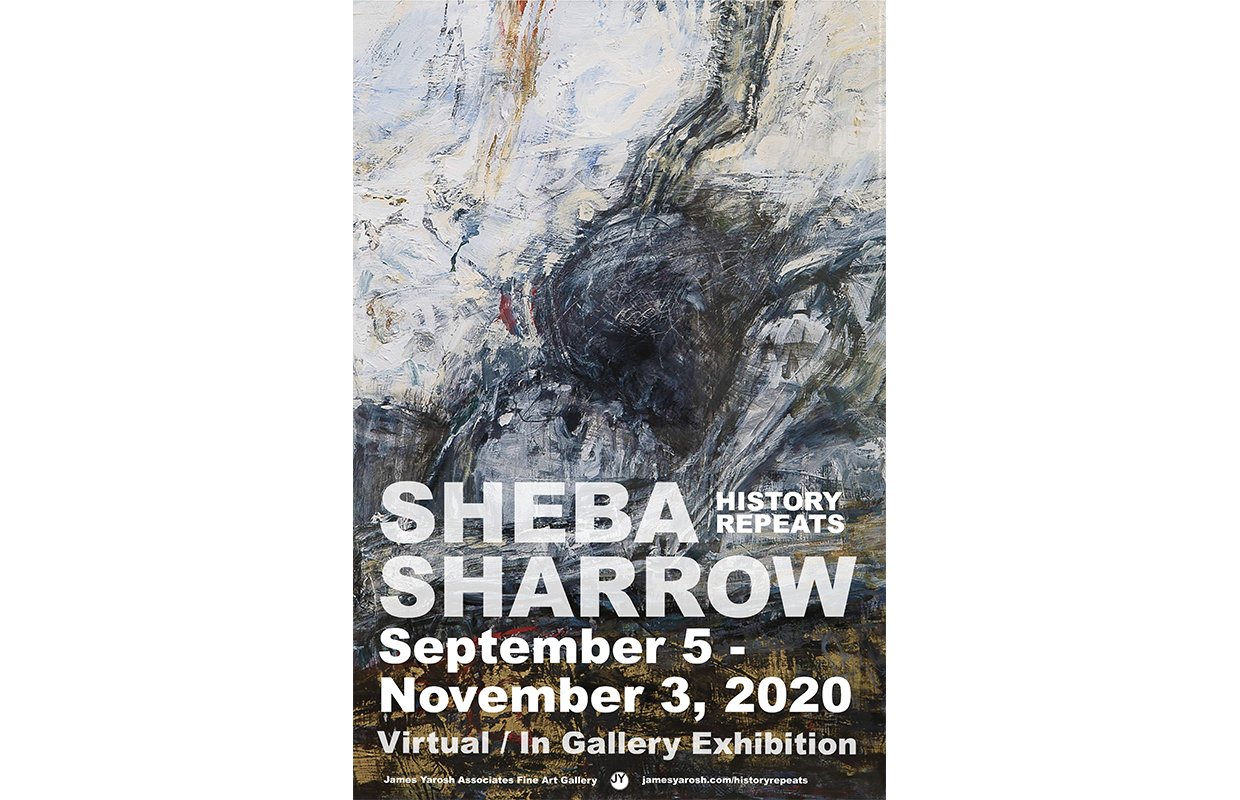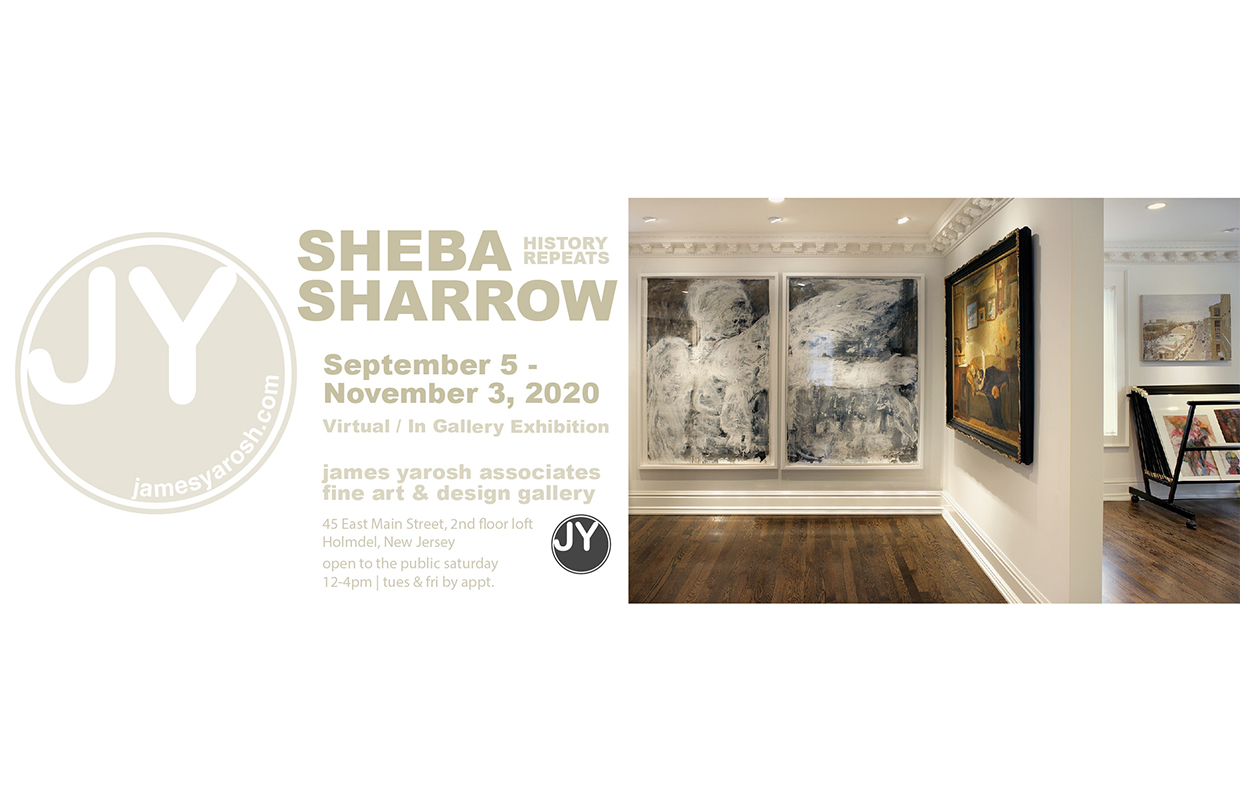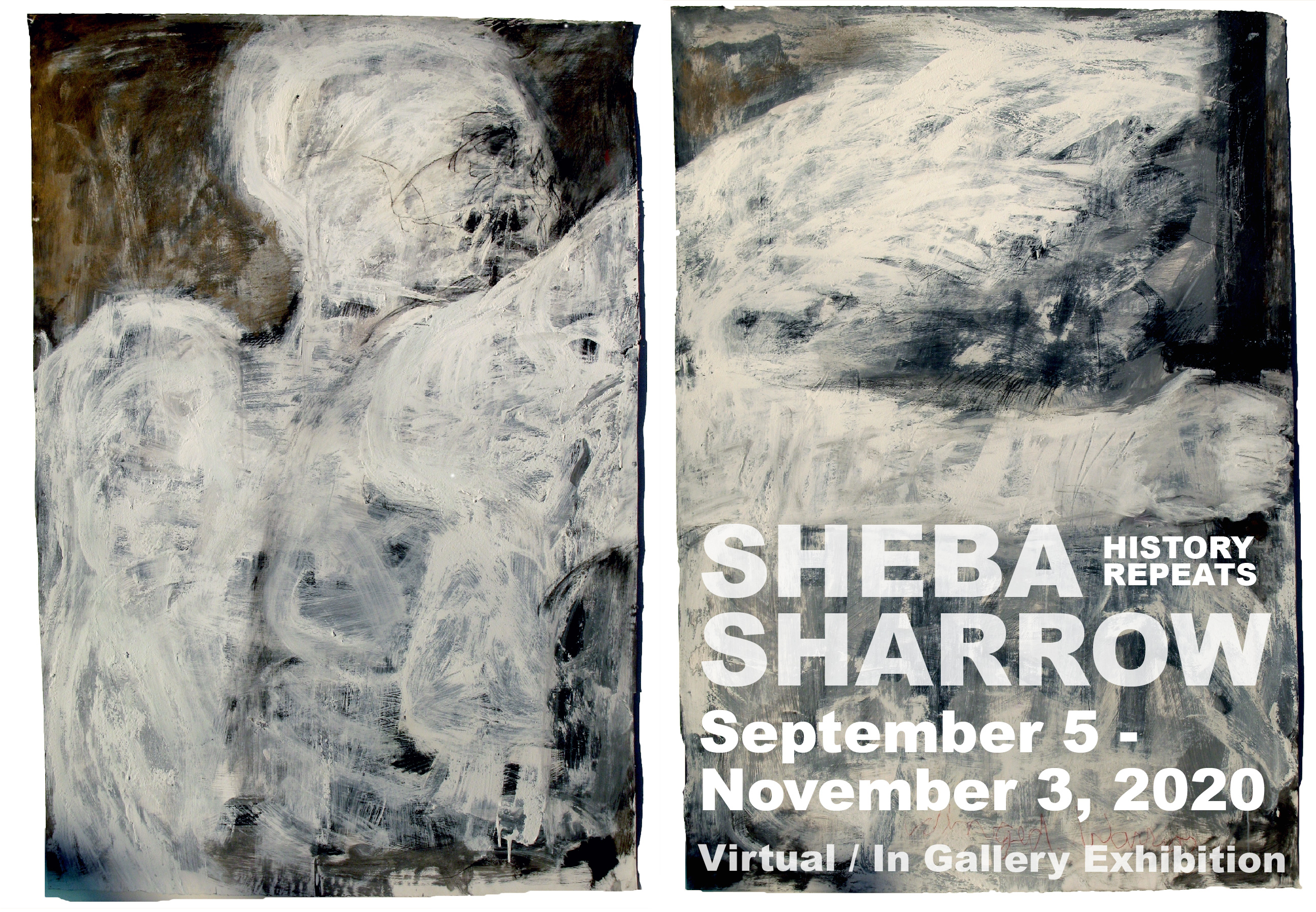
SHEBA SHARROW, Winged warrior
"Without the arts...civil rights will be like a bird without wings"
- John Lewis, U.S., Representative and civil rights leader
SHEBA SHARROW – HISTORY REPEATS
2020 has been a year of reckoning, a year of soul-searching, a year of — we hope, ultimately — clarity. Uncomfortably bonded by a global pandemic, Americans have been confronting the long-unaddressed tears in our fabric of social justice: Black Lives Matter, health disparities along racial divides, governmental threats that challenge our Constitutional rights, an upcoming pivotal presidential election that divides.
“We cannot seem to get it right.”
These are the words spoken by Sheba Sharrow (1926–2006) to The New York Times in 2002. “As long as the world is going the way it is going, I cannot stop doing what I have been doing,” she explained, the voice of an artist who had witnessed and chronicled genocide, the struggle for civil rights, the often-bloody battles waged to live a human life.
The figurative painter’s works presented in this curated collection speak poignantly to our current times and yet were created decades before, serving as an artist’s voice protesting Nazi Germany and bearing witness to the Holocaust, championing the cause of the Civil Rights Movement of the 1960s and ’70s, and mourning the carnage brought on by wars. This voice, which has spanned the 20th century, is warning us: Learn from the past; history’s tragedies repeat.
Sharrow’s painterly storytelling, coupled with poetic text, is a cautionary tale, pleading with us that we have walked this path before and what we are experiencing now is not new to humankind.
In times of turmoil, art has shown an unrelenting mirror to what is transpiring before us, showing us truth, showing us the path in a way that mere words cannot. Artists like Sharrow are philosophers, activists, advocates — if only we’d listen. Sharrow’s paintings may reflect events and human tragedies from decades ago, but as today’s headlines show, they are not too far removed from what we see beyond our doorstep.
This exhibition — in person and online as a reflection of our socially distant times — gives us pause, a chance to think about our shared humanity through the generations and to conceive, as those who went before us had, better days ahead. The art inspires us to champion right and condemn wrong, and when the world becomes confusing, it fortifies us to be resilient and forge on.
James Yarosh Associates Fine Art Gallery invites you to view the following collection of Sheba Sharrow’s art below as it is paired with poetry, quotes and critical essays that serve as an online guide. By spending the time to really look at the paintings carefully and thoughtfully, we allow the artist’s work to resonate, connect and give voice to the past, so we can learn from it once again.
Sharrow’s expressionistic work, with its stunning surfaces and unabashed bravery that seem to run toward difficult subject matter, might initially stop us in our tracks. Yet, as we look closer, we see the winning thought is ultimately to champion a belief in beauty. The artist’s work — now echoing through time — is an example of a lesson learned throughout the ages: The Arts are always there to lead the way.
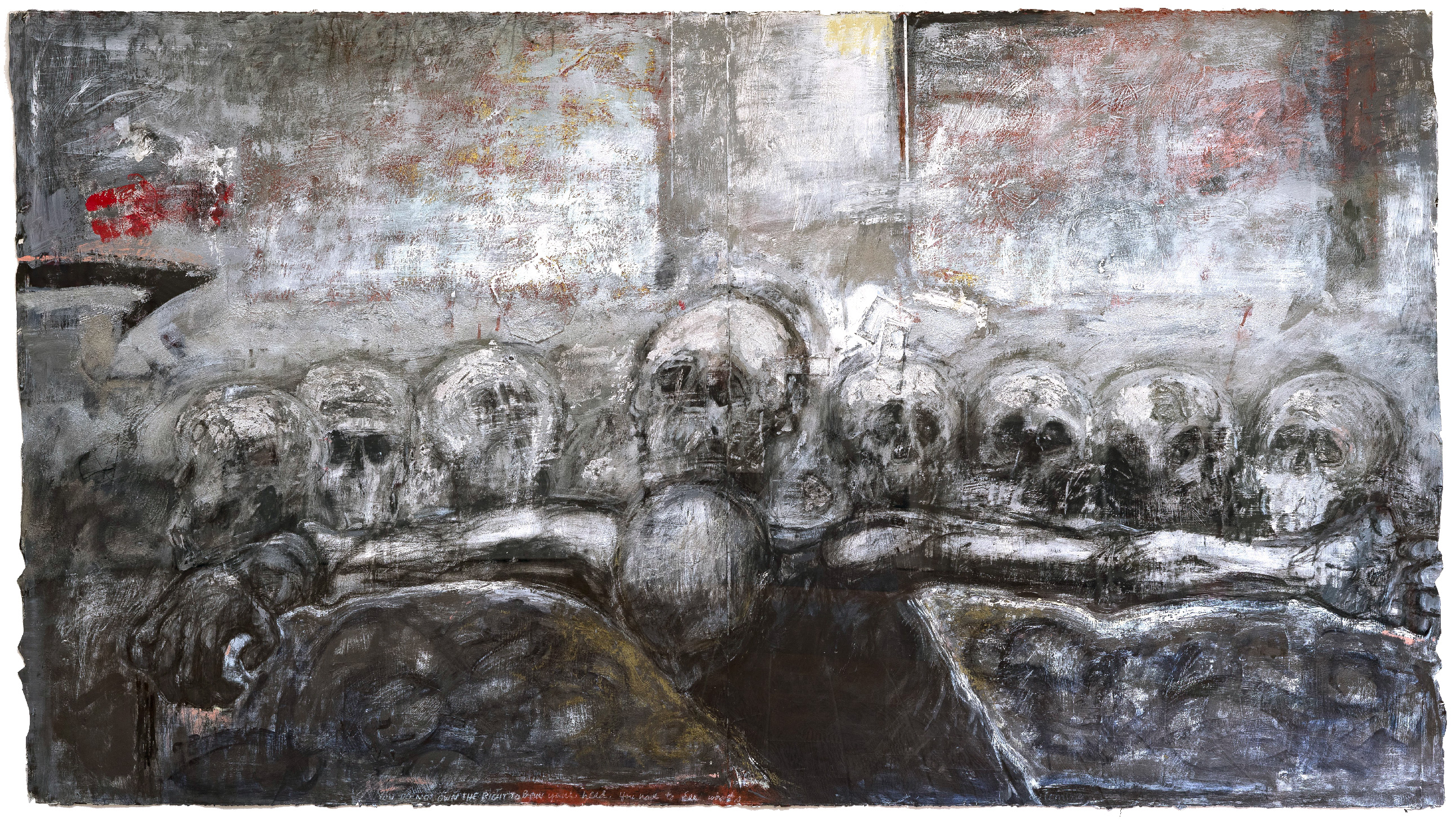
SHEBA SHARROW, Balancing Act II, 1992, 60 x 84 inches, Mixed Media on Arches Paper
![SHeba Sharrow History repeats [Recovered]-09 SHeba Sharrow History repeats [Recovered]-09](http://www.jamesyarosh.com/wp-content/uploads/2020/07/SHeba-Sharrow-History-repeats-Recovered-09.jpg)
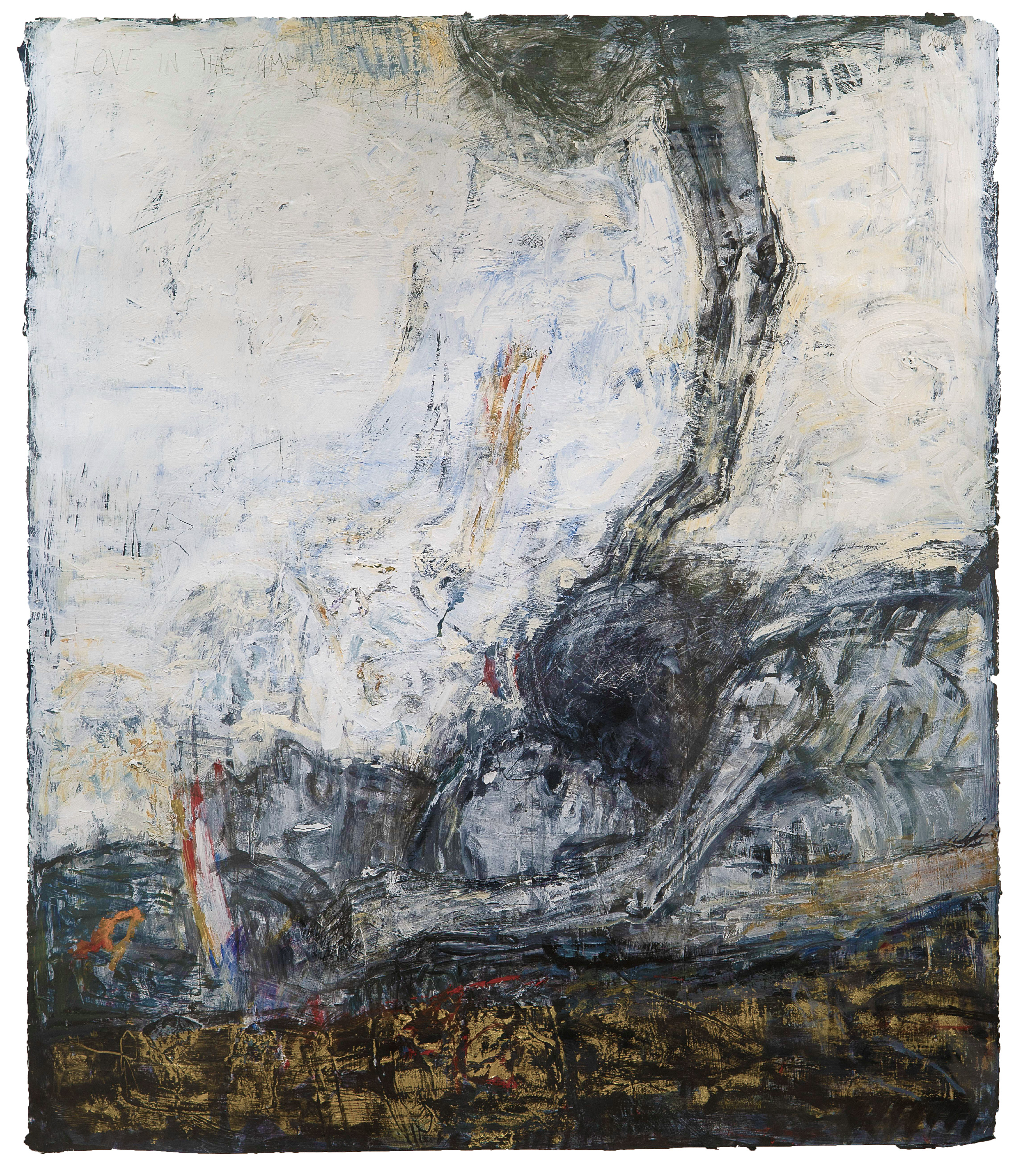
SHEBA SHARROW, Love in the Time of Death, 1995, 60 x 52 inches, Mixed Media on Arches Paper
U.S. Corona Virus Death Toll Rises Above 100,000 in the World's Deadliest Outbreak
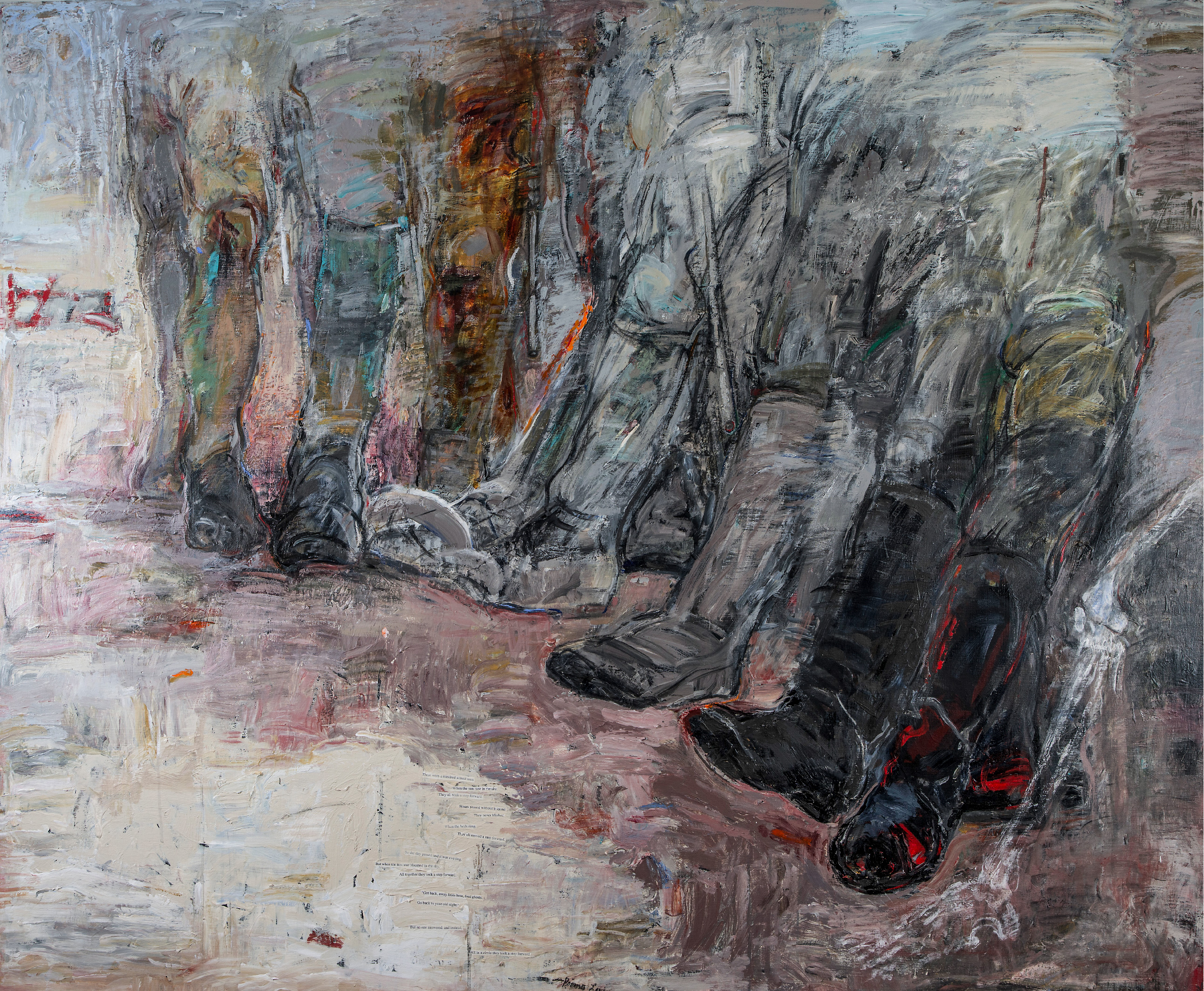
SHEBA SHARROW, 2006, Erano Cento, 60 x 72 inches Acrylic on Linen
HISTORY REPEATS
Figurative painter Sheba Sharrow bore witness to human suffering, struggle and liberation. She was a child of the Great Depression and World War II, a participant in the social justice movements of the 1960s and '70s, saw the bloody roads walked for civil rights and the damages wrought by wars.
Through a vigorous and poetic hand, her work reflects on brutality and simultaneously pays homage to the animating power of solidarity, warning us: Remember, history's tragedies repeat.
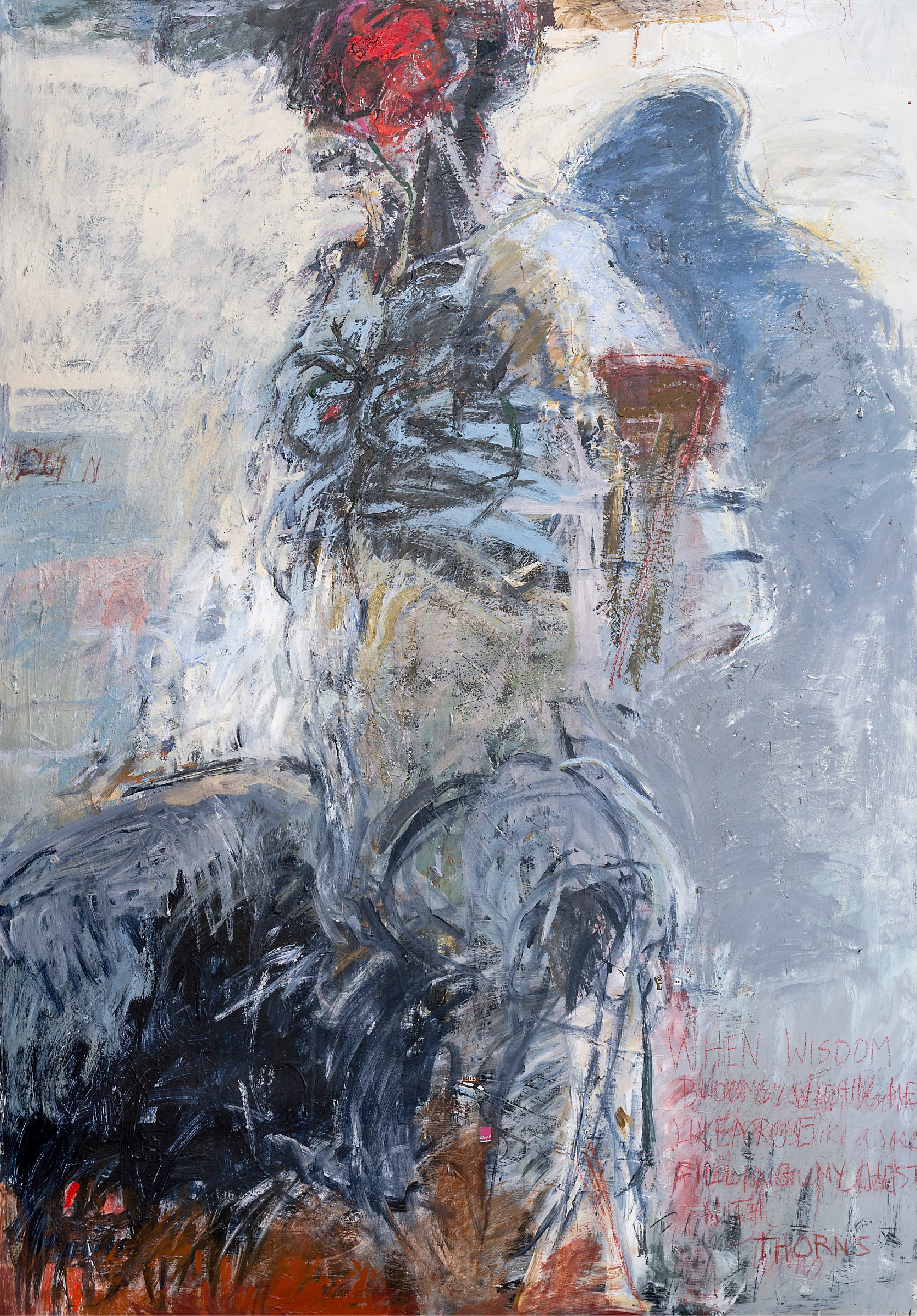
SHEBA SHARROW, Bound Figure, 1995, 74 x 51 inches, Mixed Media on Arches Paper
"When wisdom blooms within me like a rose filling my chest with thorns"
-From Sheba Sharrow's "Bound Figure."
CIVIL RIGHTS - BLACK LIVES MATTER
All of us, and especially those of us who know the struggles to gain equality need to then turn around and lend a hand to those who come next in their quest for equal rights and justice. In whatever capacity we can find a role, it must be ours to be part of this Civil Rights journey too. I keep thinking of Ruth Bader Ginsburg quoting suffragist Sarah Grimké regarding the women’s movement: “I ask no favor for my sex. All I ask of our brethren is that they take their feet off our necks.” I remember Marsha P. Johnson and the brave drag queens and transgender community who pushed back against the police clashing with the LGBT community at the Stonewall riots 50 years ago, saying “ENOUGH IS ENOUGH! Shame on those who have forced the hand of protest and riot when the message of focus is a goal of one world where we can all simply join hands - James Yarosh
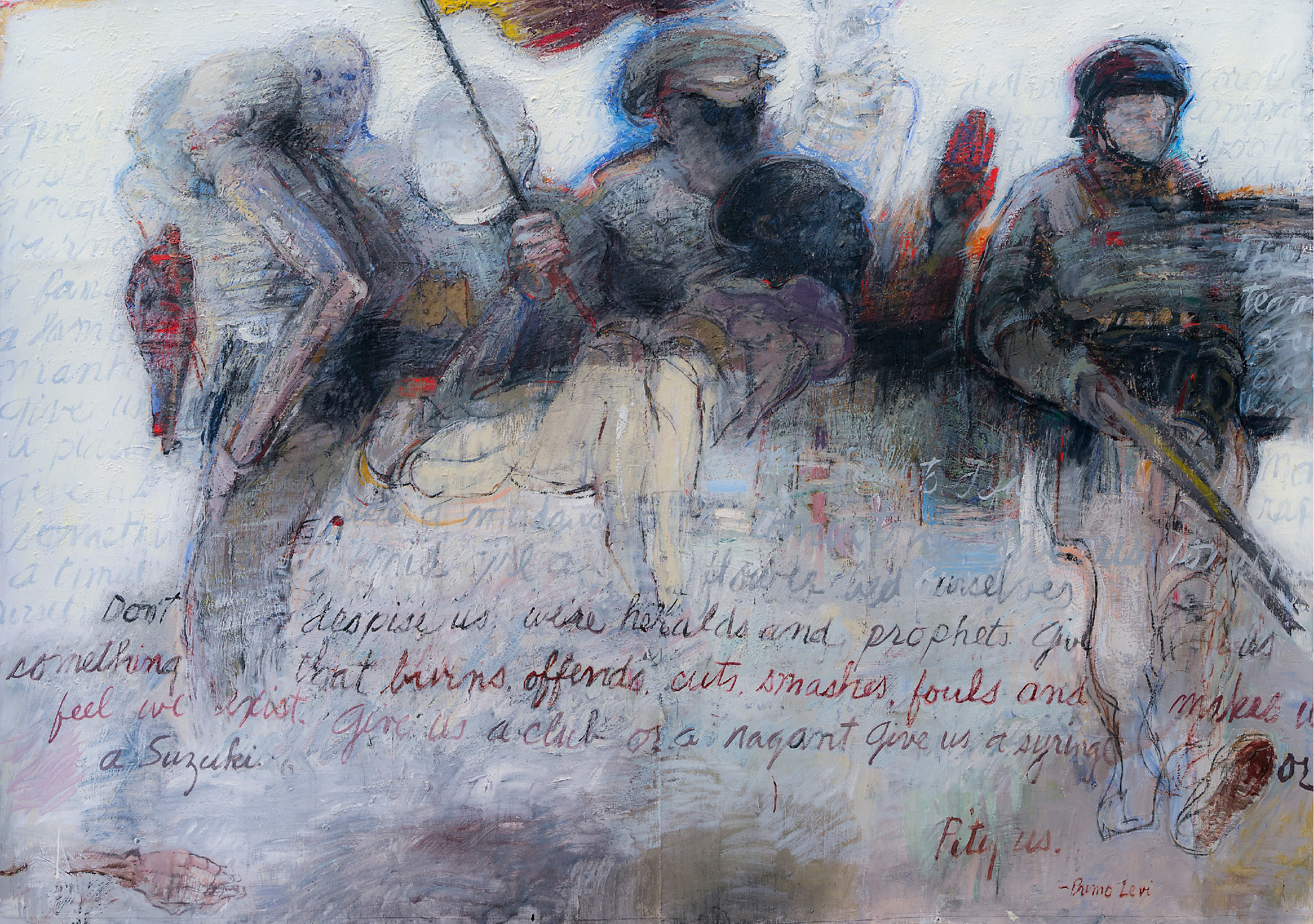
SHEBA SHARROW, Dateci IV, 1999, 64 x 84 inches, Mixed Media on Arches Paper
"Give us Give us something to destroy A corolla, a silent corner, A boon companion, a magistrate A telephone booth. A journalist, a renegade A fan of the opposing team A lamp post, a manhole cover a bench. Give us something to deface: A plaster wall, the Mona Lisa, A mudguard, a tombstone. Give us something to rape: A timid girl, A flower bed, ourselves. Don't despise us; We're heralds, and prophets. Give us something that burns, offends, cuts, smashes, fouls And makes us feel we exist. Give us a club or a Nagant. Give us a syringe or a Suzuki. Pity us."
- Primo Levi
![SHeba Sharrow History repeats [Recovered]-21 SHeba Sharrow History repeats [Recovered]-21](http://www.jamesyarosh.com/wp-content/uploads/2020/07/SHeba-Sharrow-History-repeats-Recovered-21.jpg)
SHEBA SHARROW, Dateci I,II,III, 1999, 65 x 42 inches, Mixed Media on Arches Paper
"In Dateci I-IV, Sharrow incorporates the poem 'Dateci (Give Us)' by Primo Levi, a survivor of Auschwitz and preemi- nent Holocaust writer. Sharrow’s straightforward willingness to address the horrors of warfare and genocide is reminiscent of Picasso’s Guernica. But while Picasso immersed us into chaos on an epic scale, Sharrow breaks things down into single gestures, working with four separate panels, with each of the first three focused on a sole, classically nude, figure (perhaps the same figure). Here as elsewhere, the back- grounds are spare, so that the viewer is compelled to take in each individual as individual—each one of the millions lost, a human being. We see their journey: the first, with the scale and force of Millet’s Sower, still with the strength to fight back; the second no longer upright, head down, a military vehicle looming behind; the third falling limp like Christ being taken down from the cross. In the fourth panel, the nude figure is on the ground, at the feet of others, some with helmets, one with a white collar, and amongst them, a bloodied arm and hand seeming to gesture "Heil Hitler."
How can art respond to such horror? As Sharrow shows, by bearing witness and giving voice to the victims. And fur- ther, by transforming it into something beautiful, through colors and gestures that make us feel. Sharrow’s work pro- vokes empathy that penetrates beyond language barriers."
Theresa Grupico, PhD, Adjunct Professor in both the Department of English and the Department of Art and Design at Monmouth University
"Sharrow both explicitly and subtly referenced literary and visual histories. For instance, her four paintings Dateci repro- duce lines from Primo Levi’s poem of the same name, which calls out for the world to “give us” various things to destroy, deface, and “make us feel we exist.” As occurs in many of Sharrow’s paintings, singular human figures emerge into their existence from the surrounding painterly negative space. Often they struggle and collapse, recalling images by many expressionists who came before Sharrow. In Dateci IV, the final painting of the series, with banner flying and hands raised, a dynamic arc of protesters marches forward toward a fallen figure and beyond into our space. Will we join them? Or will we retreat cowardly into Levi’s cry to “pity us”?
Corey Dzenko, PhD, Assistant Professor of Art History at Monmouth University
![SHeba Sharrow History repeats [Recovered]-18-18 SHeba Sharrow History repeats [Recovered]-18-18](http://www.jamesyarosh.com/wp-content/uploads/2020/07/SHeba-Sharrow-History-repeats-Recovered-18-18.jpg)
SHEBA SHARROW, Ahkmatova’s Troubled Sleep, 1995, 42 x 36 inches, Acrylic on canvas
"Get in good trouble, necessary trouble, and help redeem the soul of America."
- John Lewis speaking atop the Edmund Pettus Bridge in Selma, Alabama, on March 1, 2020.
![SHeba Sharrow History repeats [Recovered]-20 SHeba Sharrow History repeats [Recovered]-20](http://www.jamesyarosh.com/wp-content/uploads/2020/07/SHeba-Sharrow-History-repeats-Recovered-20.jpg)
SHEBA SHARROW, Sleep of Reason, 2001, 36 x 42 inches, Acrylic on linen
“If not us, then who? If not now, then when?”
- John Lewis
![SHeba Sharrow History repeats [Recovered]-19 SHeba Sharrow History repeats [Recovered]-19](http://www.jamesyarosh.com/wp-content/uploads/2020/07/SHeba-Sharrow-History-repeats-Recovered-19-1.jpg)
SHEBA SHARROW, White Knight - Warrior Series, 1988, 65 x 72 inches, Oil on canvas
![SHeba Sharrow History repeats [Recovered]-22 SHeba Sharrow History repeats [Recovered]-22](http://www.jamesyarosh.com/wp-content/uploads/2020/07/SHeba-Sharrow-History-repeats-Recovered-22.jpg)
Sheba Sharrow exhibit at Monmouth University in partnership with James Yarosh Associates | September 5 - December 3, 2017
SHEBA SHARROW
Born in Brooklyn in 1926 to Russian-Jewish immigrant parents, Sheba Sharrow grew up in Chicago and earned her BFA at the Art Institute of Chicago, studying with Boris Anisfeld and Joseph Hirsch. She continued her studies at the Pennsylvania Academy of Fine Arts and earned an MFA at the Tyler School of the Arts at Temple University. She has been considered part of the “Chicago School” of imagist painters, fitting generationally into the “Monster Roster” group of artists from that city, including the most well-known of her classmates to lead the charge of image and ideas over pure abstraction, Leon Golub and Nancy Spero. A resident of Cherry Hill, New Jersey, Sharrow died in 2006.
In the dominant milieu of Abstract Expressionism beginning in the 1950s, which actively rebelled against identifiable “meaning,” Sharrow remained grounded in a humanist tradition and a social context. Curator and writer Alejandro Anreus placed her “in the company of Kollwitz, Beckman and Orozco,” and writer Amy Fine Collins linked “her sensibility to German Expressionism.”
Sharrow’s unique style of storytelling and her occasional use of poetic text stand her apart. Her artistic intentions were deeply intellectual.
![SHeba Sharrow History repeats [Recovered]-14 SHeba Sharrow History repeats [Recovered]-14](http://www.jamesyarosh.com/wp-content/uploads/2020/07/SHeba-Sharrow-History-repeats-Recovered-14.jpg)
![SHeba Sharrow History repeats [Recovered]-23 SHeba Sharrow History repeats [Recovered]-23](http://www.jamesyarosh.com/wp-content/uploads/2020/07/SHeba-Sharrow-History-repeats-Recovered-23.jpg)

